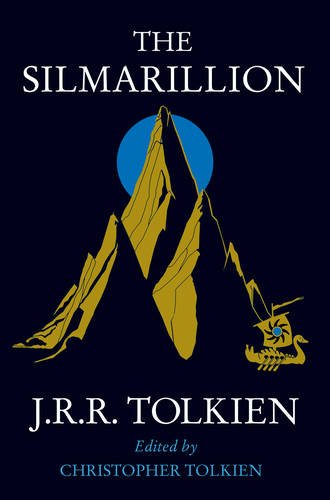
J.R.R. Tolkien’s densest work is also his most rewarding
By Greg Waldock, Staff Writer
When The Lord of the Rings was published in the 1950s, it kick-started the entire genre of fantasy. However, what the public saw then was only a glimpse into the world that J.R.R. Tolkien had been creating since his days as a soldier in the First World War. The Silmarillion is a realization of that world—a massively dense collection of epics and histories from the world of Middle-earth, which is a mythologized account of the prehistory of our own world.
Beginning with the creation of the universe and ending with a summary of The Lord of the Rings tens of thousands of years later, The Silmarillion accomplishes the impressive task of being part myth, part history text, and part poetry. It carries all of Tolkien’s unique artistic style throughout, making dense family trees and folk traditions into a beautifully readable experience.
The Silmarillion is a collection of half-finished books assembled by J.R.R.’s son, Christopher Tolkien. The first book, Ainulindalë, opens with a very biblical account of Creation. Tolkien Senior outlines the basic rules of the deities of the world, and explains where Gandalf, Saruman, Sauron, and the Balrogs all come from. The following book, Valaquenta, establishes the reason for evil existing and the world being flawed, like any good creation myth should. Right off the bat, the reader is introduced to the writing style here: difficult, but immensely rewarding. Tolkien’s absolute mastery of the English language allows him to put a power and depth behind his words that other authors can’t touch. The creation of the world is the perfect expression of this. Make it through these two books without confusion, and you’re golden for the rest.
The bulk of The Silmarillion is based around the Quenta Silmarillion, the long and complex history of the Elves of Middle-earth. This is the part that scares most casual readers away. Colossally complicated family trees and a political history spanning thousands and thousands of years are the most obvious reasons for fright, though it also has some of J.R.R. Tolkien’s greatest prose and most beautiful stories. Of Beren and Luthien is a love story between an Elf and a Man, and is one of Tolkien’s finest works. It also had a significant emotional impact on him, as he had “Luthien” inscribed on his wife’s gravestone. “Beren” was added to the author’s own gravestone after his death. This book also contains the very oldest (in writing order, not chronologically) story in Middle-earth: The Fall of Gondolin, first written on the back of a music sheet during World War One.
The Akallabêth is the final major chapter of the book, and it literally describes Atlantis. This is the book that fully explains why Aragorn is such an important character and why he’s destined for the throne. The whole “holy bloodline” thing is a bit less uncomfortably racist than it appears. After this, it’s just Of the Rings of Power and the Third Age, which is a brief summary of The Hobbit and The Lord of the Rings.
The Silmarillion is the crowning achievement of both Tolkiens. The sheer quantity of amazing imagery and stories that emerge from this book make the original trilogy so much more satisfying to read or watch afterwards. It improves both the movies and books by giving an astounding amount of context, and it’s almost all written in gorgeous, flowing prose. If you can survive the staggering number of names and linguistic jargon—and if you’re willing to put a real effort into reading this compendium—the Tolkiens will reward you with an experience better than any other fantasy novel can give you.

